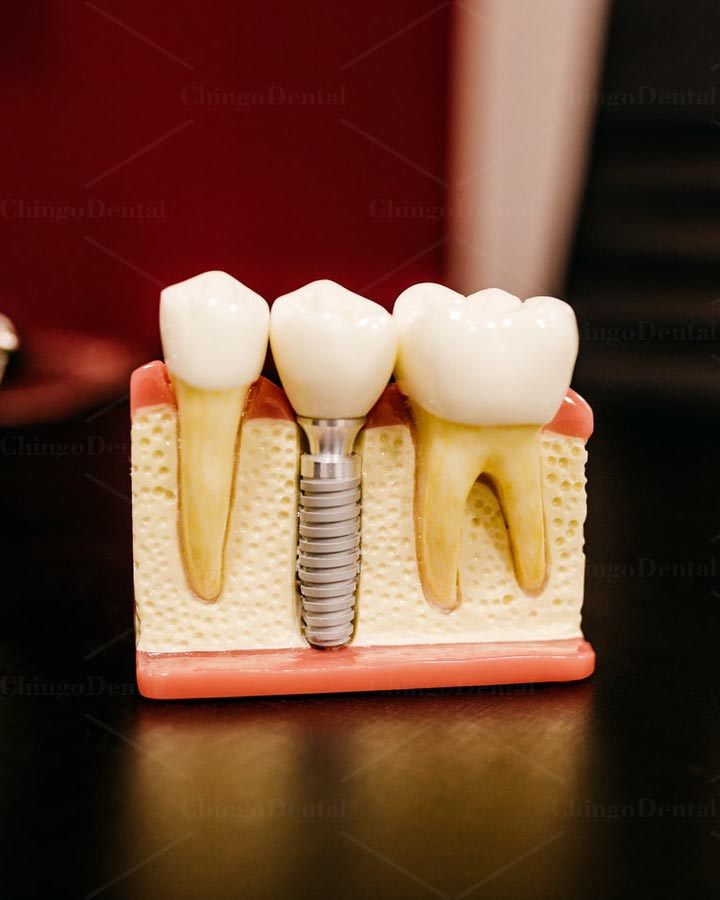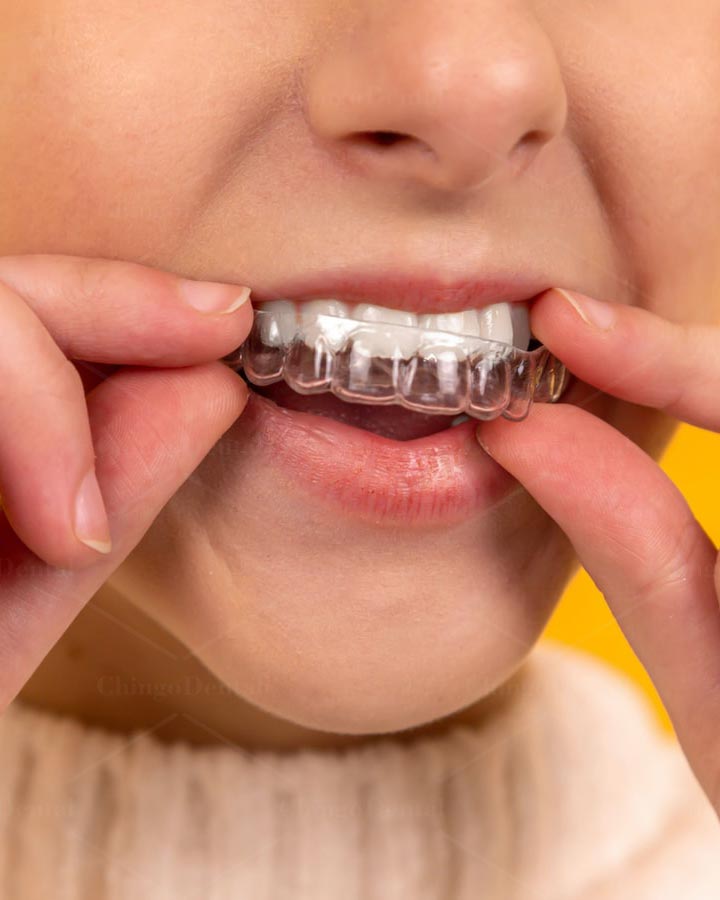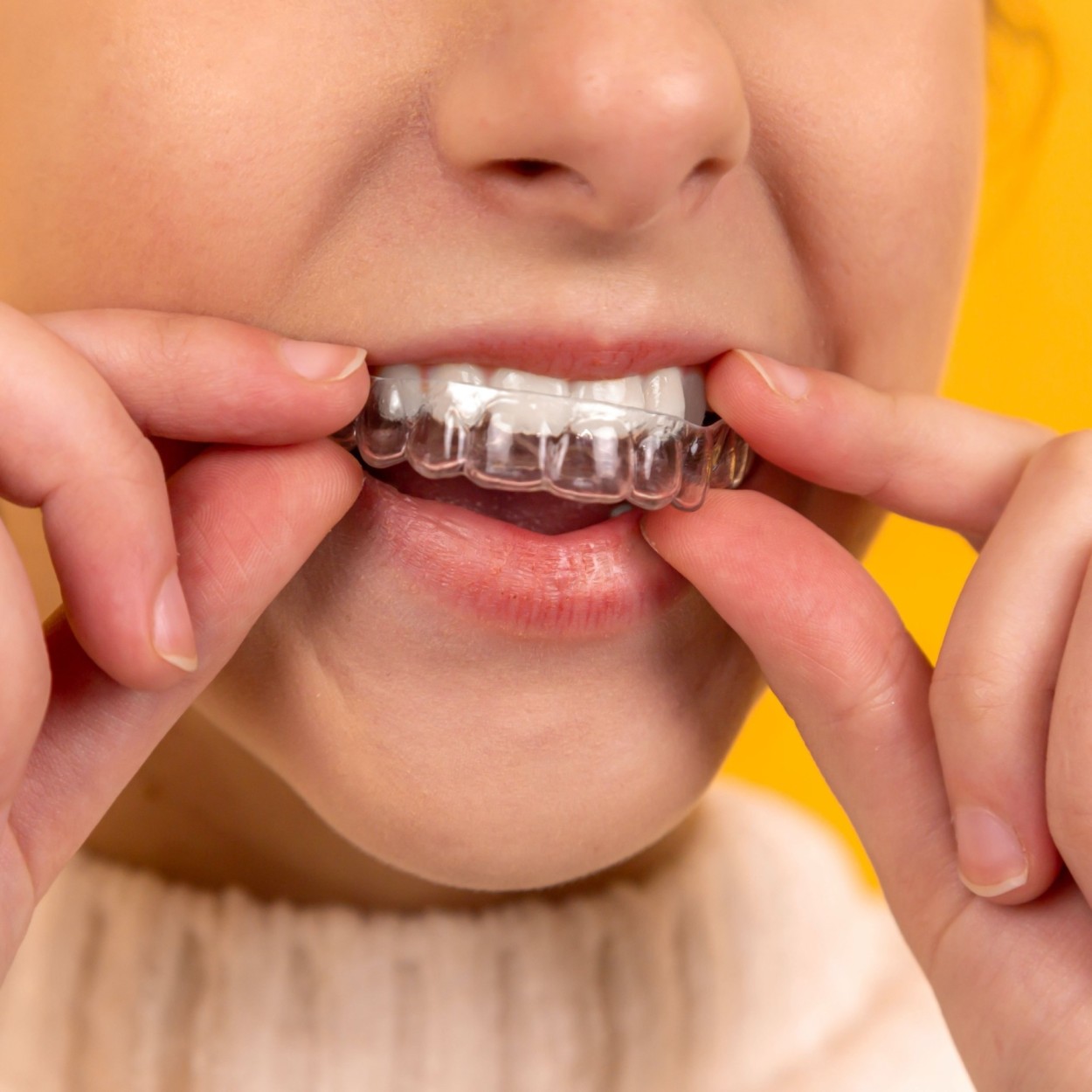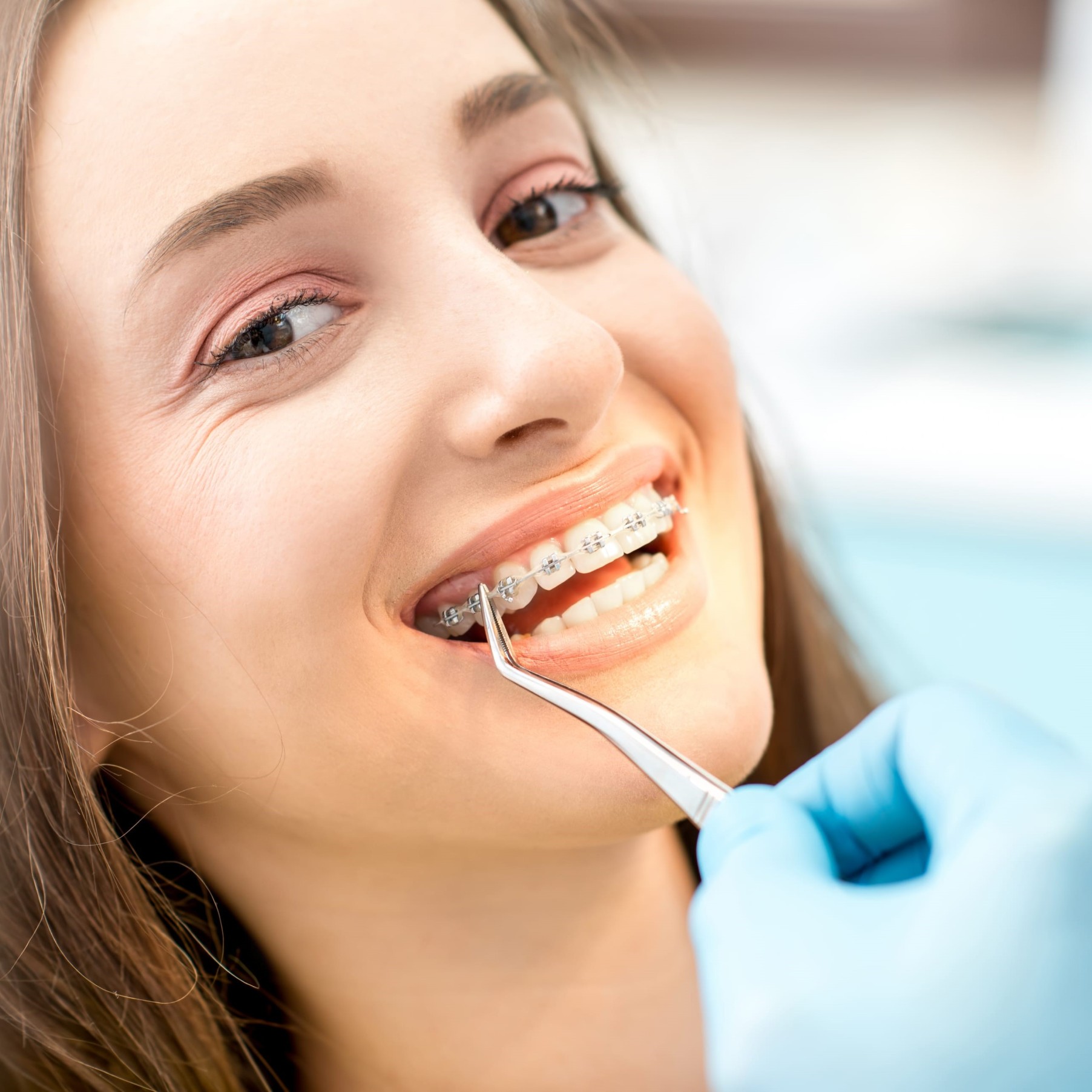Dental Braces are considered a method of using a system of fixed braces on the surface of the teeth and the bowstring that are adjusted to the right impact force to help the teeth move to the desired position. Or with the modern Invisalign transparent trough system, smart braces technology has overcome all the overbite, underbite, crooked teeth .. of the customer.
1. Dental braces are the safest orthodontic method
Braces are the method using a set of orthodontia types such as wire, bracket, elastics, hooks, minivis, transparent plastic troughs … create an arc around the teeth to shrink and adjust the teeth to the standard position, plastic trough transparent,… create an arc around the teeth to shrink and adjust the teeth to the standard position
The dental braces must be carried out by a team of highly specialized dentists, conducting analysis of the jaw structure through X-rays, selecting the appropriate orthodontia and performing standardization. The braces process is perfectly possible to know how the results change through modern predictive tools. The usual braces will last more than 1 year to bring the best effect.
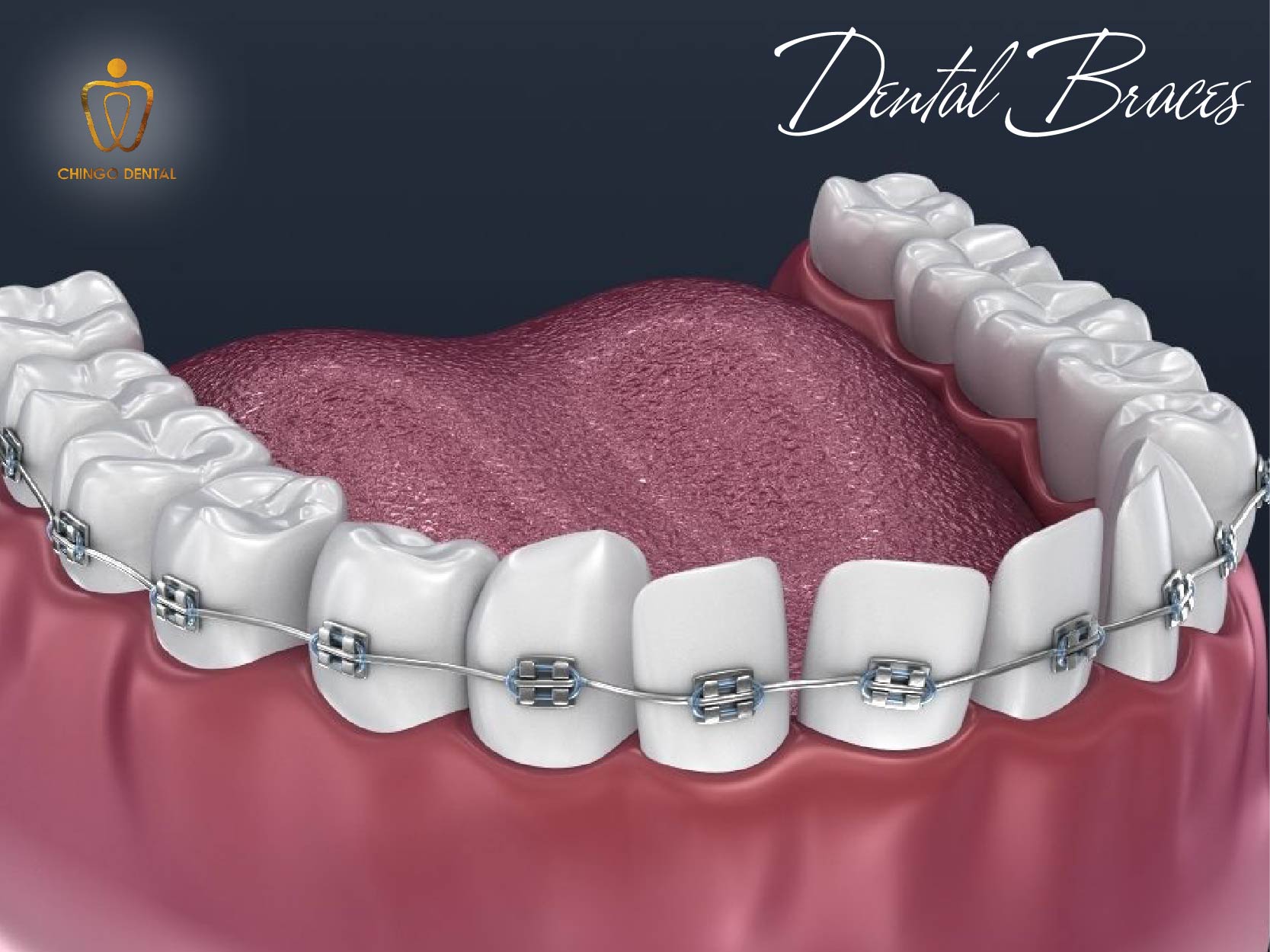
2. What cases should perform braces?
If customers experience the following conditions, Chingo Dental recommends that customers:
- Limping teeth, crowded
- Widely spaced teeth
- Deviated midline: When smiling, the upper teeth have no balance on the left and right.
- Overbite: The upper molars give ahead compared to the lower jaw
- Underbite: Leads to the inverted joint or the biting joint confronts
- Teeth tilted due to tooth loss or lack of teeth, aligning orthodontia to create dental implant space
- Open bite: Do not touch each other when biting the joint in the center position.
- Deep bite: Upper jaw covered with the excessive lower jaw.
- Crossbite: Lower teeth covered outside the upper tooth, normal biological reverse.
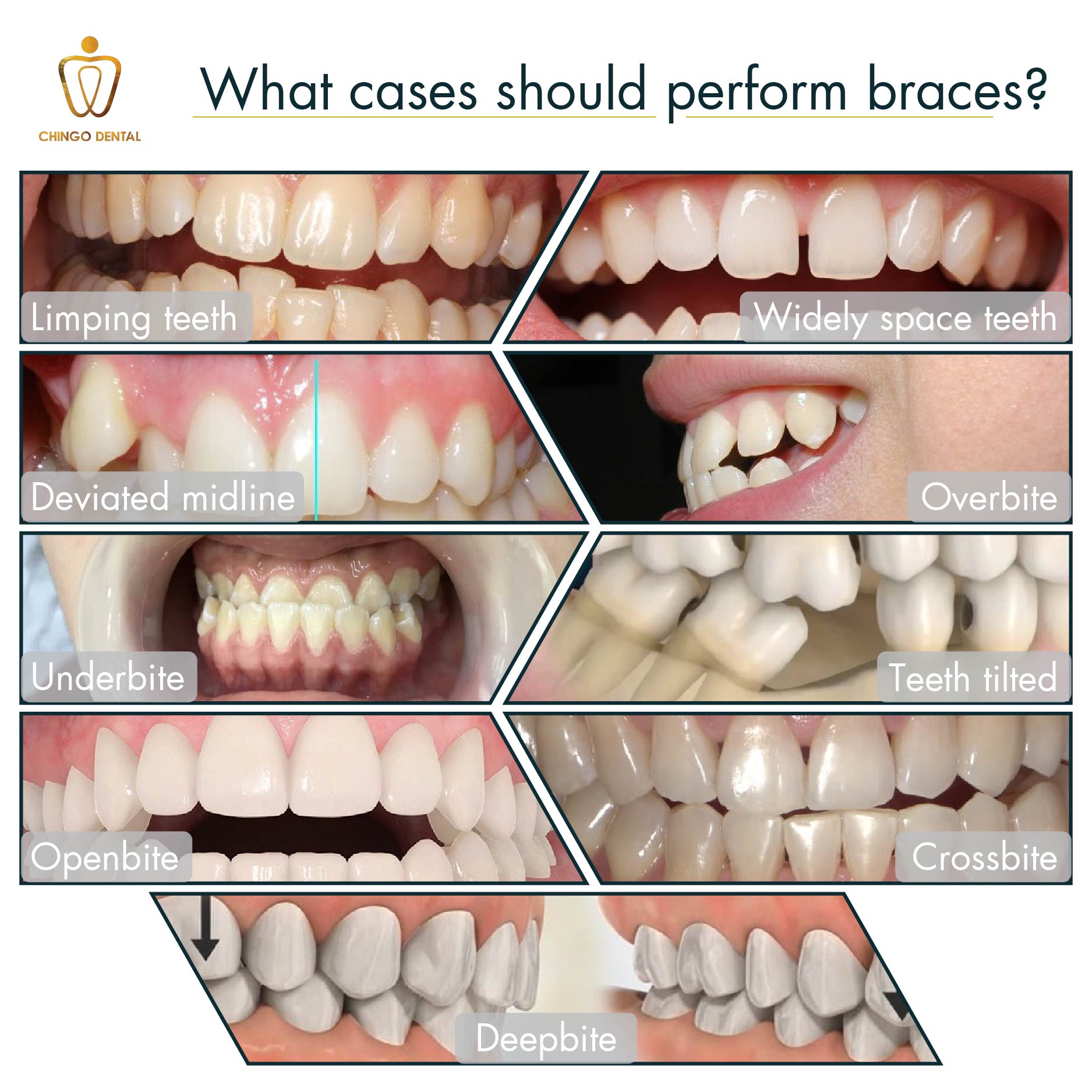
3. The most popular types of braces today
3.1 Normal Braces
Currently, there are relatively many types of braces used in dental braces, however, in terms of brace mechanism, there are only 4 types of mechanical braces as follows:
- Traditional metal braces: These are the classic and most popular braces with reasonable prices and are also the first choice for many customers.
- Porcelain and crystal traditional braces: The difference of this type of installation lies in the fact that the doctor will use porcelain or crystal material to design bows and racks.
- Self-tying braces (metal, porcelain, crystal): This type of braces allows the orthodontia wire to be able to move freely inside the rack, reducing the aches and pains for customers.
- Inner braces (Tongue ): Basically, customers with the same inner braces in the traditional braces or self-fastening. However, instead of being mounted on the outside of the tooth, this system will be installed behind the teeth.

| Type of braces |
Advantages |
Disadvantages |
|---|---|---|
|
Metal |
– The cheapest cost of any type of braces. Braces customers gold with higher costs
– No high-tech required use in treatment support – Short treatment time due to strong traction – Elastic band structure can carry many colors, suitable for children |
– Poor aesthetics because the braces will be clearly exposed when communicating.
– Easy-to-happen incidents such as braces coming loose. – The material of the metal can irritate the gums, harmful to the body for some sensitive people. – Damage to soft tissues in the oral cavity (lip bites, cheek bites,…) – It is necessary to abstain from a variety of hard, chewy, sticky foods while in braces |
|
Porcelain |
– Porcelain orthodontia is suitable for most customer ages.
– Porcelain braces have the same color as real teeth, the process of orthodontia customers with porcelain sets is not exposed like metal braces, bringing high aesthetics to customers – High elastic tie, creating a sense of comfort during braces – Stable impact force, adjusted by the doctor through each visit, helping to shorten the orthodontia process with porcelain braces. – Help move teeth quickly to bring beautiful and long-term results |
– The cost of porcelain orthodontia braces is higher than metal braces.
– The devices are prone to bumps, slippage, affecting the chewing of customers and can cause damage to soft tissues in the oral cavity |
|
Self-fastening metal |
– Minimize time to wear braces
– Minimize the ability to expand/ slip – Minimize friction force thereby reducing gingivitis – No need to see a dentist regularly to adjust the wire |
– The cost is higher than conventional braces
– The thickness of the large set can be annoying for the user – Requires a skilled dentist to ensure the safety of the braces |
|
Porcelain self-fastening |
– Outstanding aesthetics because porcelain color coincides with real teeth
– High orthodontia efficiency – Limit aches and pains when wearing braces – Safe for the body, no irritation – Minimize bumps/slippage |
– Fragile porcelain material, complex design
– Relatively high orthodontia costs – Feeling of floating, entangled in the first time orthodontia |
3.2 Invisalign Transparent Braces
In addition, Invisalign transparent braces are a method of braces that do not use braces, elastic bands like regular braces but use transparent braces to correct teeth.
Invisalign transparent orthodontia brings outstanding advantages, overcoming most of the defects compared to braced orthotics.
- High aesthetics: During orthodontia, invisalign transparent troughs are difficult to detect without careful attention.
- High efficiency: Customers will visit regularly every 2 months to customize the size of the braces tray, shorten the orthodontia time, quickly own a regular smile
- Can be reassembled during orthodontia process, easy to clean
- Preserve all root yeast when orthodonting
- See the results of the orthodontia of modern technology

4. Braces process
Step 1: Examination and consultation
For preliminary evaluations and determination of braces conditions, the doctor will conduct a general examination of the customer’s oral condition. The dentist will provide information to help customers understand the current dental problem, the orthodontia method that customers can use.
Step 2: X-ray of customer’s tooth by specialized equipment
The oral structure will be clearly recorded by the device through multiple angles. Thereby, the dentist can calculate the brace plan and appropriate combination methods
Step 3: Get your teeth marks
Your teeth will be tracked with an automatic marker. These parameters help the dentist determine the attachment of braces, braces with the force of correction corresponding to the condition of the customer’s teeth.
Step 4: Proceed with mounting braces
Braces are mounted on the surface of the teeth, fixed, attached to each other customers with wire to create impact force, help to correct and rearrange the position of the teeth on the jaw bow
Step 5: Schedule a follow-up visit for the braces process
During the period of braces, re-examination is required. The dentist will monitor the shift of teeth in stages and adjust the corresponding braced force to achieve maximum efficiency in the shortest time.
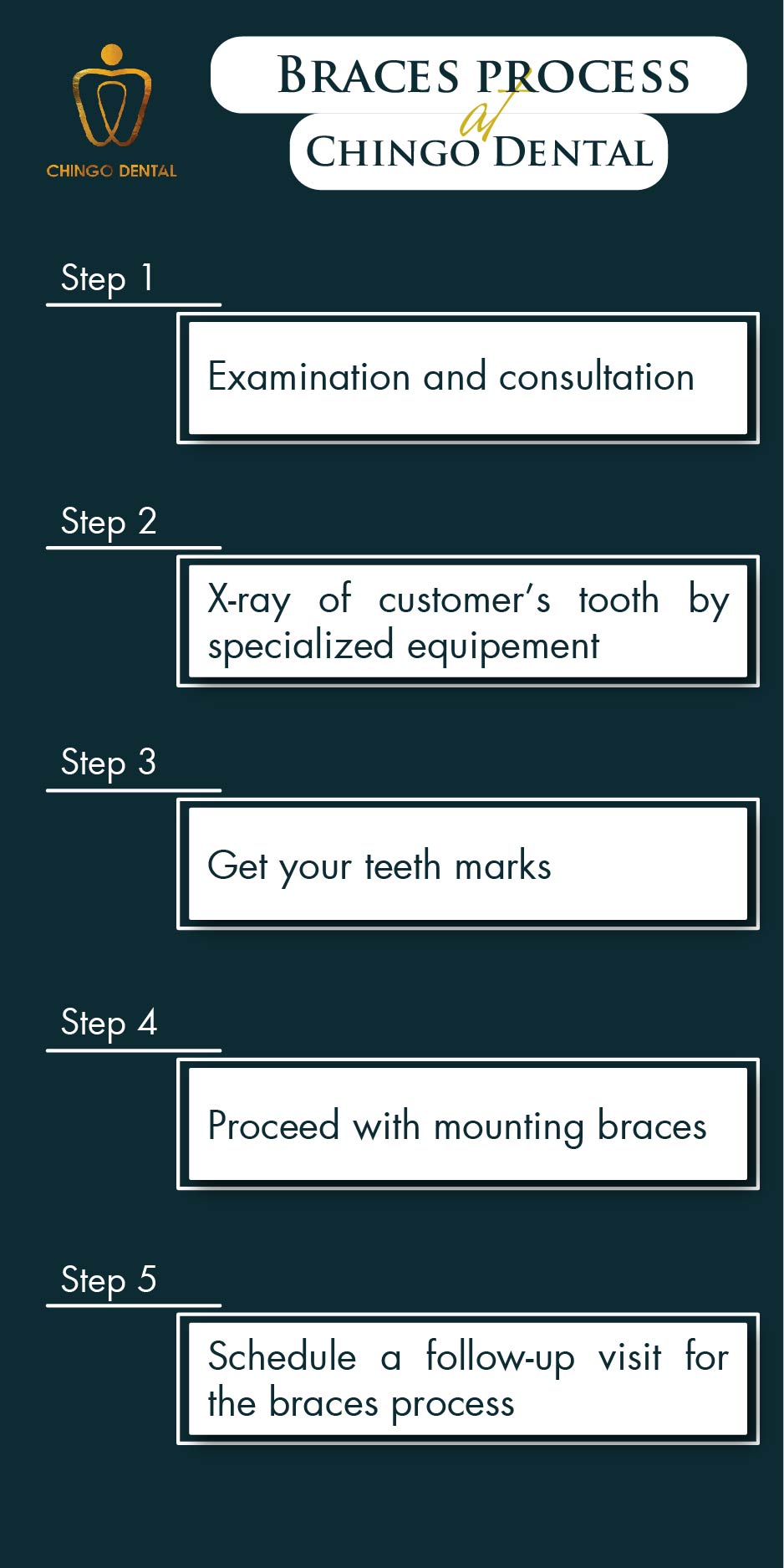
5. Invisalign braces process
The invisalign transparent tray customer braces process is carried out in 7 steps, but the orthodontia technique is simpler due to the most modern alignment tray technology supported, including:
Step 1: X-ray, free general examination to plan orthodontia
Step 2: Oral hygiene
Step 3: Design and place the Invisalign transparent trough in the tooth mold
Step 4: Adjust the impact force to suit each customer
Step 5: Complete the Invisalign process, evaluate the effectiveness of orthotic
Step 6: Schedule regular visits and examinations during process
Step 7: After completing the orthodontia, the dentist removes the braces and evaluates the results

6. Frequently Asked Questions About Braces
7. What the customer says about braces at Chingo Dental
8. Pictures of successful braces customers at Chingo Dental




